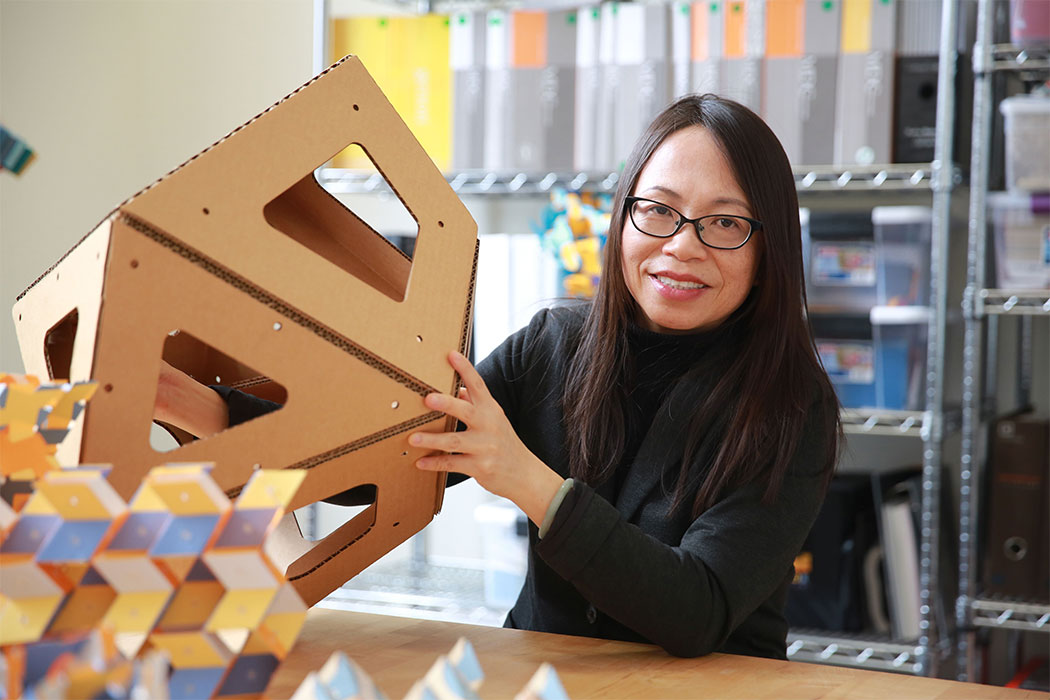Lights | Camera | Action
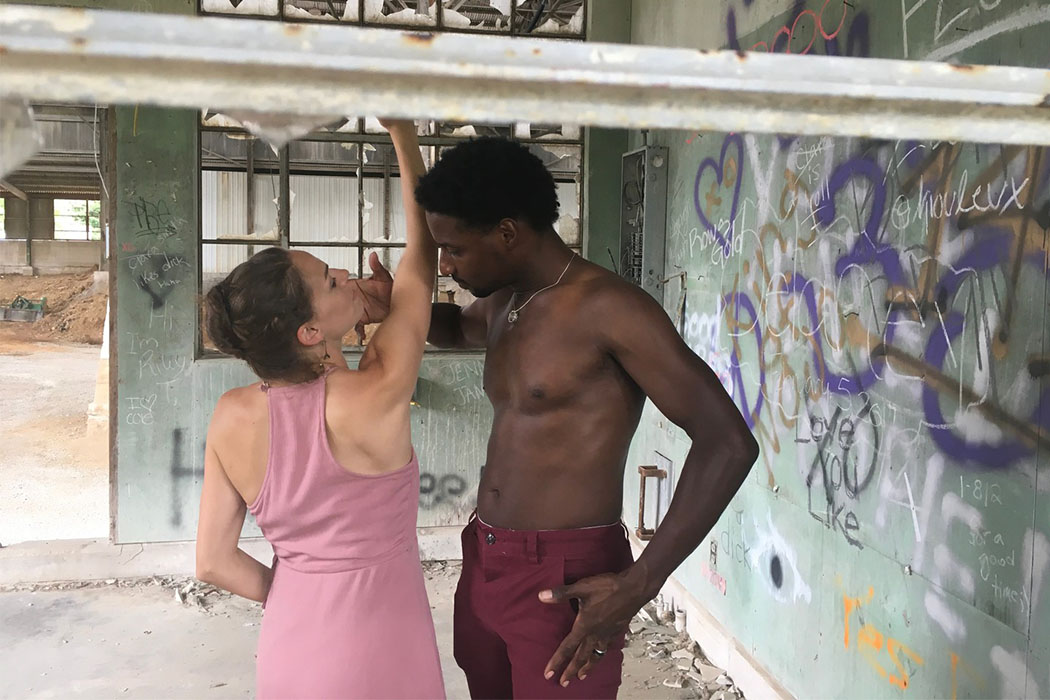
Breath | Light | Stone is a 15-minute film conceived and co-directed by Allen Hahn and Elizabeth Shea, both professors in the IU Department of Theatre, Drama, and Contemporary Dance.
Shot in late June 2017 at an abandoned limestone mill in Bloomington, Indiana, Breath | Light | Stone is a visually stunning, genre-defying intersection of modern dance and filmmaking. Part performance and part documentary, the three elements of the film’s title interact and complement each other in an artful, visceral way.
The film also spotlights a rich vein of IU talent. In addition to Hahn and Shea, three of the film’s featured dancers—Rachel Newbrough, BS’12; Ryan Galloway, BS’15; and Stephanie Gunter Marks, BS’17—are IU alums. Caitlin Negron and Justin Sears-Watson, also dancers in the film, have worked at IU as adjunct instructors. Other IU alumni involved include co-director Ryan Newman, BA’07; costume designer Amy Burrell, BS’90, MFA’11; and director of photography Andrew Lee, BA’06.
Breath | Light | Stone had its Bloomington premiere at the IU Cinema in January.
Pride interviewed Shea and Hahn in October.
Could you say a little bit about yourselves, your backgrounds, and your academic interests?
Shea: Sure, I’m Liz Shea. I am a dance artist, specializing mostly in choreography, dance making, and also somatic approaches to performance. I’ve been at IU since 2001. I’ve worked in and out of academia my whole life, but not steadily in academia, so I’ve worked as an independent artist parallel to my careers.
Hahn: And I’m Allen Hahn. I teach lighting design and I came here in the fall of 2014. I have been a freelance lighting designer for more than 20 years and worked primarily in theater and opera, some in dance, but more and more now that I’ve met Liz and renewed my fondness and affection for lighting in that genre specifically. And then, more recently I’ve begun to branch out into filmmaking, having served in one capacity or another on a couple films now, starting with this one, and branching out into some new media work as well.
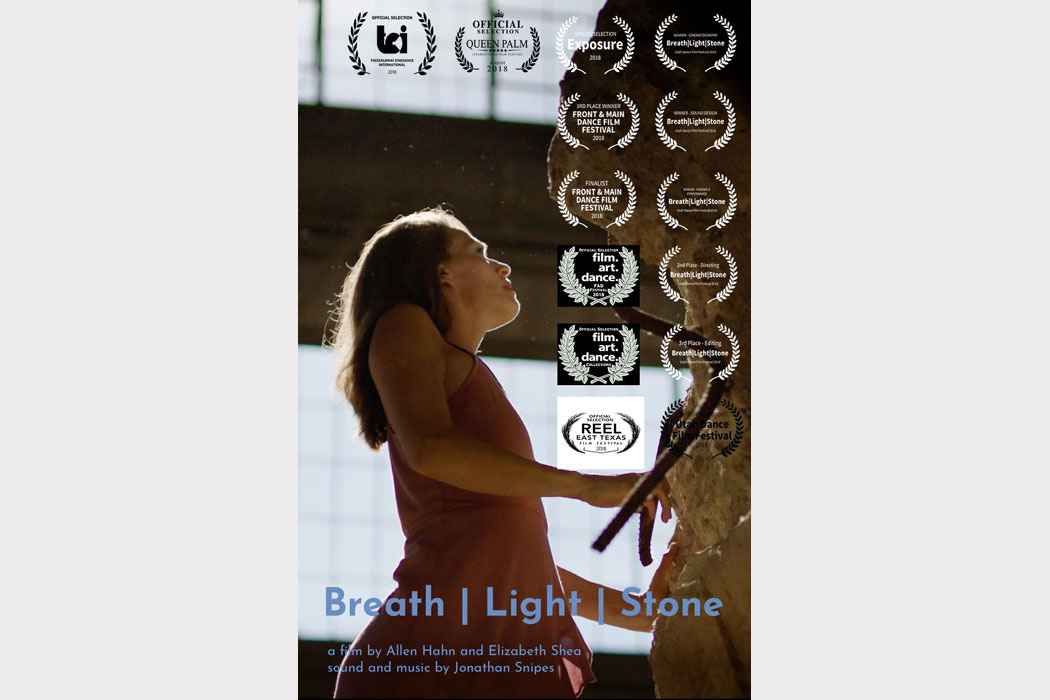
So how did Breath | Light | Stone come about?
Shea: Well let’s see, I was like, “Allen, let’s do a film!” It was something like that.
Hahn: I found this beautiful space, the Woolery Mill, while I was traipsing around town. It was a stone mill that ceased operation sometime in the ’70s if I recall correctly. I think I saw it lurking in the background and went to investigate and got really excited about the space and said, “I need to show someone this.” And I thought of Liz first, being the adventurous soul that she is, and brought her there and said, “Don’t you think we should do something here?” And she said, “How about a film?” That’s the way I remember it. And we were off to the races.
Did you have ideas for the film beyond the location, or did those just develop out of that space?
Shea: I would say the space was really the impetus for the way we thought about the film. I mean, it was the main event. The movement was created around the film. Allen spent a lot of time watching the light. [He] camped out there lots of times, and he watched how the light affected the architecture during different periods of the day. I think we started early spring, and that changed as we moved into summer.
Hahn: I started spending an hour here and an hour there at different times of day in the mill space and took lots and lots of photographs, looking for opportunities, compositionally, to do with the way the light was affecting the building and the surfaces, and the materials. What I really admire in Liz’s work on this film is she choreographed—the movement was really rooted in the nature of that space—in what feels to me like a more genuinely integrated way than is often the case. So often site-specific work is really just kind of a love letter to space, with the content not actually integrated, and I think Liz really figured that out.
The space—Woolery Mill—is charismatic and a scene stealer.
What struck me, watching the film, was that the location is almost like a character in the film, like an extra performer. Was that your idea from the start?
Shea: I don’t know, but it kind of happened. I’m not sure that that was something we were thinking about, but it truly did take a life of its own, I think, through the filming and the takes—and every take was different—and we had three days to shoot, so it’s very different than …
Only three days, really?
Shea: Three days to shoot the film. We were crazy lucky with the weather, really.
Hahn: Yeah, I’ll say.
Shea: It was fairly cool for late June. We were very limited, trying to get professional dancers in Indiana. The schedules were just crazy, and we were praying for it not to rain. But we were extraordinarily lucky in that we were fairly prepared coming in, with rehearsals.
Hahn: We didn’t storyboard it exactly, but we had a clear idea of the thread. We shot a week or two after the equinox, so I was able to get there a month ahead of time and really figure out, very precisely, when the light was going to be doing what we wanted. So we had a nice, detailed shooting schedule, but I think the space is kind of—and this is why I wanted to bring Liz there—the space is charismatic and a scene stealer. So it’s not surprising to hear you characterize it as a character of its own.
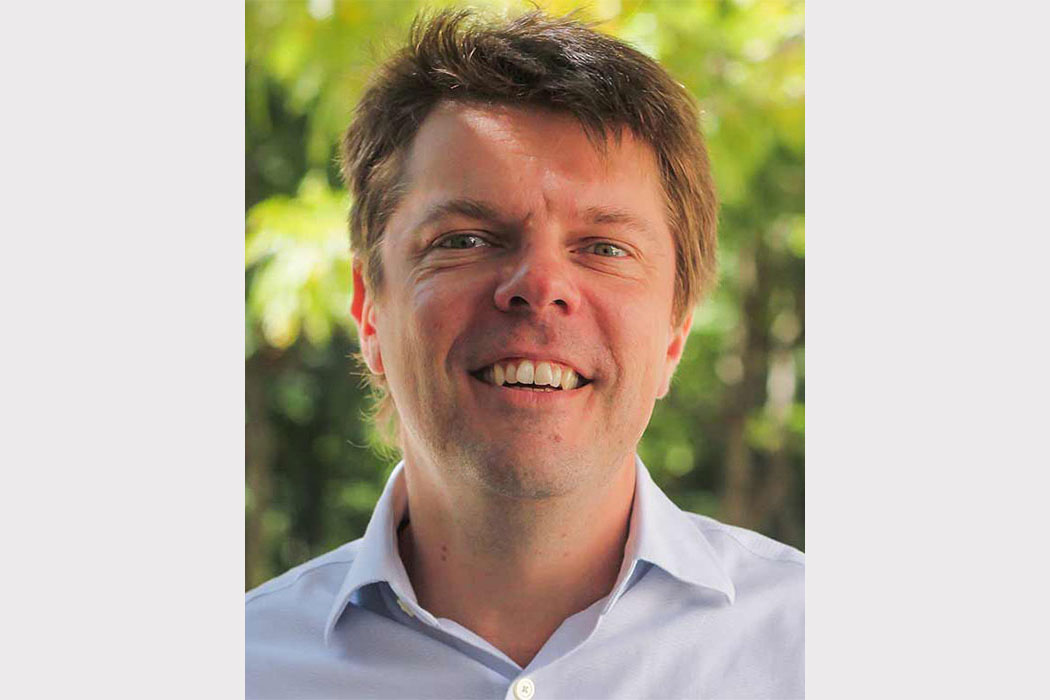
The cinematography is just exquisite. Obviously, the choreography is a large part of that, and the lighting and so forth. What kind of negotiation was that between both of you and the cinematographer?
Shea: Well, that was a real negotiation, but I feel like Ryan, was it Andrew or Ryan…?
Hahn: Andrew [Lee] was the director of photography. And Ryan [Newman] was the co-director.
Do they have IU connections?
Shea: Yes.
Hahn: They’re both alumni. They run a company called Venture Production Group.
Shea: And several of the dancers are also alums. Rachel, Ryan, Steph—three of the dancers are IU alums. And our costumer, Amy Burrell, also has two degrees from IU, one in ballet.
I really love that this is an IU team. The university … has done [a great] job in supporting not just research scientists but also artists to be able to make their work.
So, this truly is an alumni collaboration?
Shea: Yeah, it really is. I mean, the [production] guys were great. They had done a promo for one of our productions that we thought was really pretty darn good.
Hahn: I think a lot of the work they do with Venture Production lives in the sports world. So we knew, we could see from the way they shot this promo for us, and in some of the other stuff on their reel, that they really understood how to shoot movement, and bodies in motion, so that sealed the deal, I think.
Shea: Yeah, the film was shot in 4K, so they did have access to really high-end [cameras] … and they also brought someone in from New York to …
Hahn: To pull focus.
Shea: To pull focus, yeah.
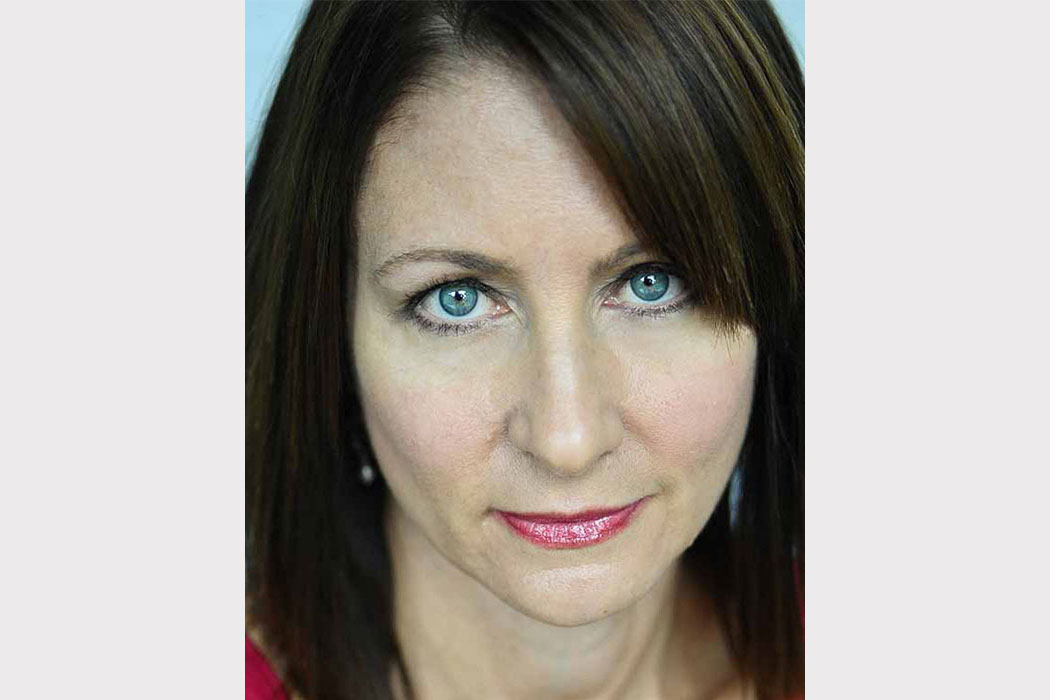
The cinematography is extraordinary, I mean, the depth of field is just remarkable. It’s like watching an Orson Welles film … but in color!
Hahn: Yeah, well that’s great. That’s a positive thrill to hear you say that.
I watched the film blown up to full screen on my iMac, and it was quite a visceral experience.
Hahn: You know, since you mentioned Orson Welles, I took, as I said, tons and tons of photographs. I uploaded them so we could all see, but I was thinking very carefully in advance about camera position and framing composition and how we could capitalize on the light at particular times of day to give us very strong shapes. And among the things I uploaded for everyone to look at were images from Orson Welles’ The Trial, which in particular, for me, is such a gorgeous compositional exercise.
There’s one scene I wanted to pick out, a very early shot where the camera’s following one of the dancers. She’s being shot basically in shadow, against a wall, and you can see on the ground, through a crack, a little flower, perhaps even a weed, but it’s something green. And, while it was not the point of the shot, I couldn’t help looking at it. Even the little green leaves cast a shadow on the wall.
Shea: That was one of Allen’s genius moves, that we had to do that early in the morning, and yeah, it was golden. The light was just …
Hahn: Honestly, I know that Andrew and Ryan went to bat for us with one of their vendors, and they got really top-notch camera equipment made by Arri, which is the industry standard for major motion pictures. So, they convinced their vendors that this was a special project and that they really needed the best gear they could get their hands on, and they were able to get us well more than what our budget allowed, in terms of equipment, which is why it looks as good as it does.
Shadowing—in all the senses of that term—seems to be a particular theme in the film.
Hahn: Well, we struggled for a long time, with what the title would be.
Shea: [The film] is what I would call a non-linear narrative. There’s no particular story. There’s rarely any linear story in modern dance, but we still feel like it’s about something. I feel there are little pockets of stories there, and it’s the relationship of the people, both to each other and to the space, that kind of made its way into the film, eventually.
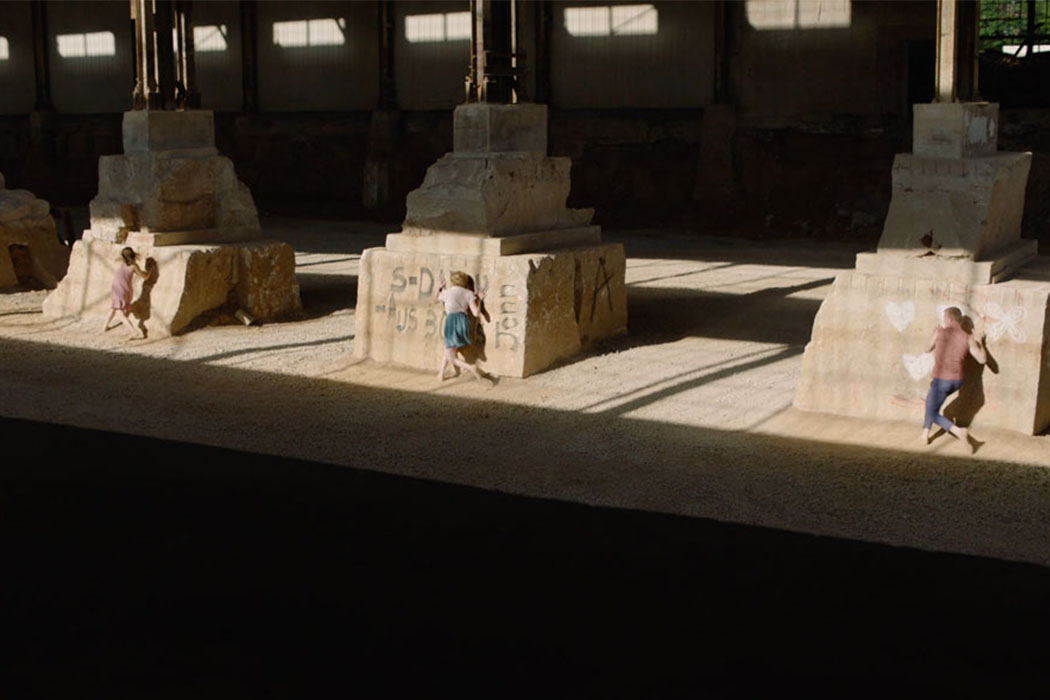
It seems as if there’s a tension, a constant tension, between freedom and space, and the interplay between open spaces and confined spaces throughout the film. Again, was that a planned idea?
Hahn: Yeah, there were so many different kinds of spaces within the site overall, we wanted to sort of play that out for as much as we could. So, it’s no accident that we don’t get the real grand space until two-thirds of the way through. We wanted to …
Shea: Slow build.
Hahn: Yeah, escalate, and the music does that as well. The movement, and the dynamism of the movement, all sort of following that trajectory.
Shea: I feel like a lot of art making is intuitive and tacit, and we don’t always know why we’re making decisions. But, you know, our minds and our bodies are light-years ahead of us, of our cognition. So, lots of times while we’re creating, we’re just taking it all in, and it’s coming out. It’s like … you put all your spices in a funnel and sift it and get this whole different thing, and I feel like that happens intuitively a lot. And it’s not until we look back later, we go, “Oh yeah, okay, that’s why I made that decision.” I can see why I kind of wanted to do that, even though I wasn’t maybe in the moment planning on that. But there is that sort of intuition in art-making that happens.
Yes, I get a sense from watching the film that my interpretation, or the meanings I impose when I watch it, will probably be vastly different than anyone else’s.
Hahn: It’s very easy to overthink something, and I think a mature artist does no small amount of pre-planning and thinking and working things through but knows also to be open to possibility in the moment. I felt so energized while we were shooting the film because we were watching what was happening on the monitors, and we knew what had worked and what hadn’t as we watched it.
Shea: Yeah, everyone was very patient. And we worked fast.
Three days is a pretty quick shoot. But, the production quality really belies that. It looks as though you probably spent months filming it.
Shea: Well, there were many months spent going into it. We also knew we had a limited time, and we had to be as ready as we could possibly be. And also, the production guys—and their crew—were great. They were fast and professional, and it really went well.
Hahn: Yeah, and they were also very generous. By which I mean, they were willing to work collaboratively with us. They were also patient, indulgent, and were willing to let us experiment.
I feel there are little pockets of stories … There’s discovery, there’s loss, there’s comfort, there’s a sense of group, there’s psychology and sociology.
Another scene, where I think all six dancers are lined up and dancing around the stone pillars, there’s something so ritualistic about it. It feels almost tribal. And, the interaction between the dancers and the space, the stone, I thought was just so striking.
Shea: Yeah, it’s interesting you said that. There is something a little tribal about the whole thing. It does feel ritualistic, you know, especially at the end, with the three women. To me, that was sort of the earth keeps turning, you know? We gotta go, we gotta go, and the men, they’re on the struggle bus with whatever’s happening. No metaphor intended, right? So, there are these two groups, where one can’t quite figure it all out. There’s a little bit of Wiccan in there, you know? It’s just sort of, the earth rotates, and here we go.
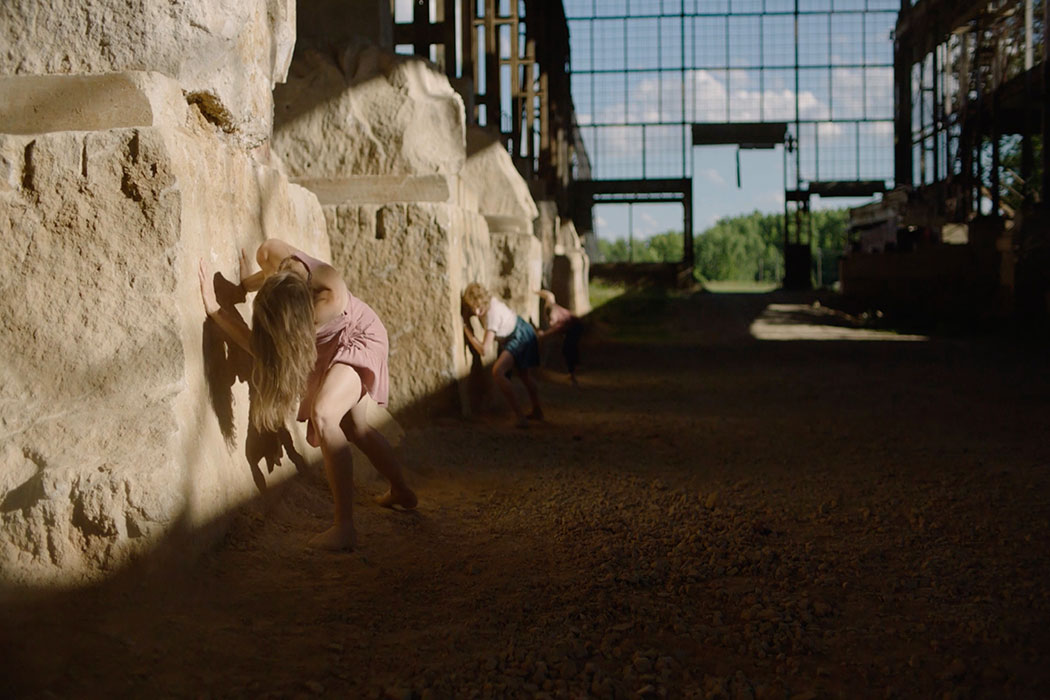
That scene, particularly, took me back to the plight of early humans, and how they interacted with their environments. And, especially the sense of wonder and awe, and perhaps even fear. And, it seems like there’s a movement throughout the film, from inside to outside, and that also seems to tell the story of human progress and development on a very primal level?
Hahn: Yeah, I had seen the choreography in the studio and seen the dancers rehearsing in the space a bit, but it wasn’t until we were editing the film that I started to discern the implied narrative of it. I wasn’t sure how to feel about that for a period of time. I was like, “Oh, is that what we want? I now realize we’re saying something, but is it what I thought we were saying?” So that was an interesting revelation.
Shea: Yeah, I like to think of it more as we’re not really making a statement, but we’re just offering something. You know, here’s just what might happen between people and their place and their environment. There’s discovery, there’s loss, there’s comfort, there’s a sense of group, there’s psychology and sociology. And, for me, that’s how I approach most of my choreography. Because I’m just fascinated with it, and that’s how I see the world. I mean, we all see the world in different ways. That’s how I like to come to movement, in that way.
Hahn: Yeah, and I try to get my graduate lighting designers to understand that there’s nothing that’s irrelevant to lighting. It’s about all the things that we talk about in theater, but it’s also about plot and character and arc and all that stuff. But, I think if you leave yourself open to signals from the universe, one can fold in all kinds of unexpected influences in making decisions about what something looks like and why.
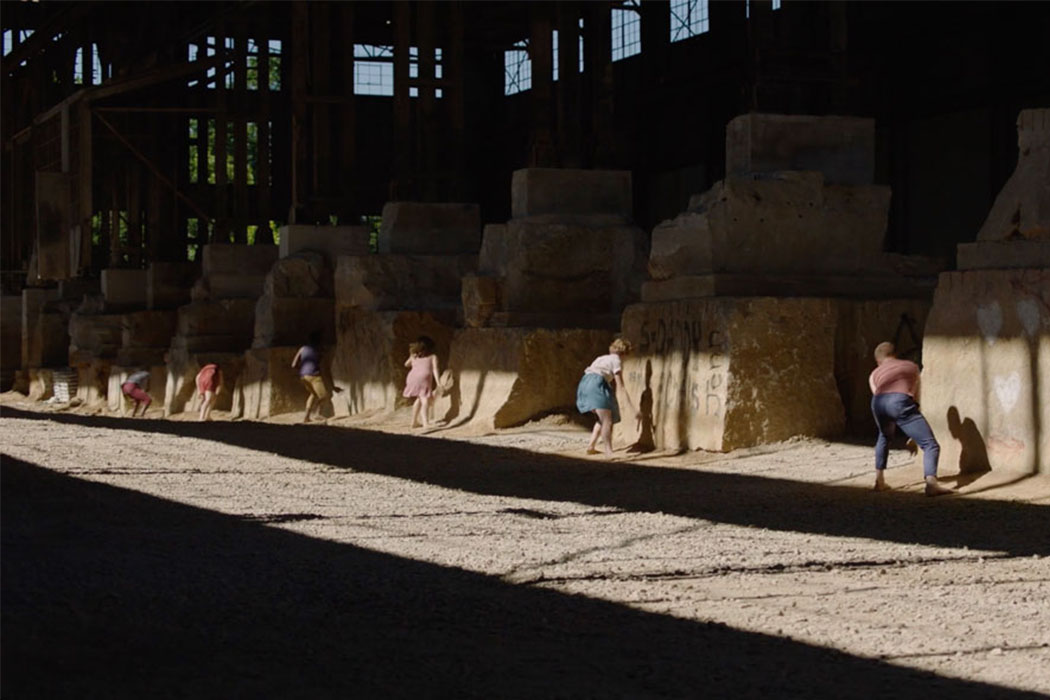
The soundtrack too is almost like another character. It adds another element to the film.
Shea: Jonathan [the composer and sound editor] spent a lot of time here, he did a lot of authentic recording. A lot of what you’re hearing is from the natural world and then engineered into a more composed format. We also had a lot of really good collaboration with him, in terms of the sound.
Hahn: Yeah, he flew in from California once, in advance of the shooting, and spent hours at the space at different times of day with a big rubber mallet and some steel tools, sort of banging on things and recording sounds of all kinds, which he then manipulated and worked into the music.
The first time I watched the film, I watched without any sound. Then, I watched the whole thing all the way through with the sound turned on. It was two very different experiences. The soundtrack makes watching the film a much more visceral and emotional experience.
Shea: I think the sound really, it moves the timeline. It builds the dynamic. Especially, we start with unstructured sound, then we move into a little bit of sonic, and then we get some low bass, you know? And then, all of a sudden we’ve got a rhythm, “Oh my god, where’d that come from?” Then we also have this structured rhythm, which is more driving than unstructured rhythm. And then, of course, there’s that moment where Caitlin’s tossed in the air, and boom everything stops. Then we have to kind of start all over again, but we never get back to that intensity. Jonathan did a great job of figuring all that out.
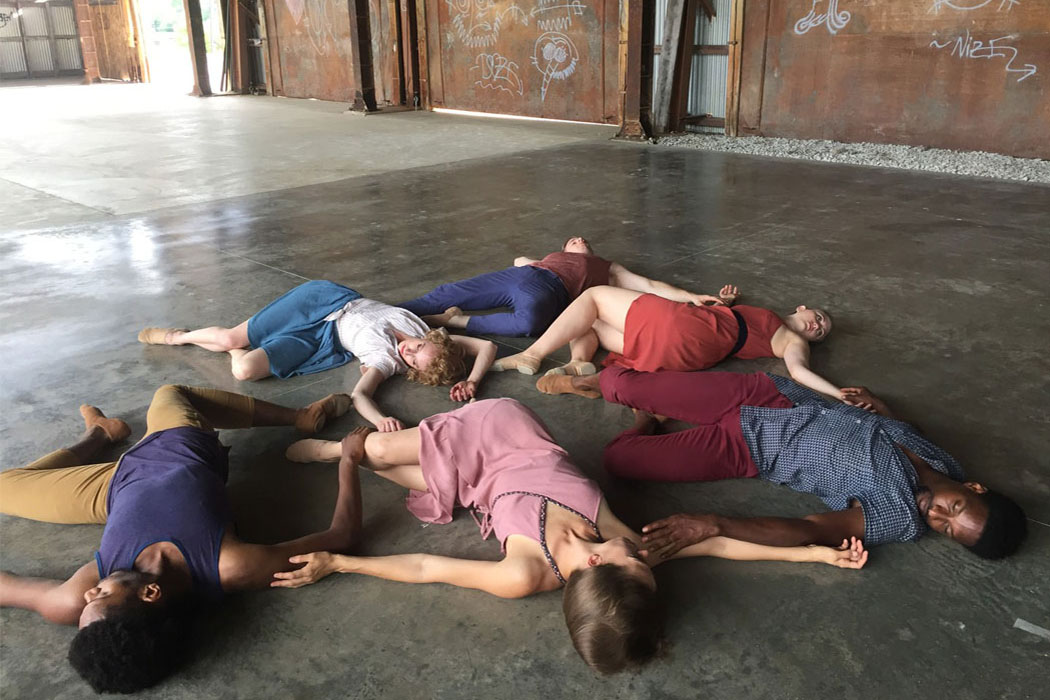
You talked about the title of the film, how did you decide on the title, the final title? There’s light, there’s stone …
Shea: Right, and breath is the dancing.
Hahn: I think we had a sense … we did some research into the history of the stone quarrying and milling locally, and so we had a notion we wanted to somehow honor that tradition.
Shea: We knew that something of the earth was important. The building itself wasn’t that important to be in the title, but the element, the stone, you know? And I think we knew that, and I think we finally got to where light played such a large part in sculpting the space. And then, of course, there are bodies, and the dancers, in particular, I thought, use their natural breath rhythm so beautifully. And, of course, we breathe. If we don’t breathe, we don’t live. So, that idea of breath as life, I think that’s how we got there.
Hahn: Yeah, and I think we were both sort of figuratively dancing around. Like, I think we were both wanting some kind of apparent contradiction in the title, so the light and stone. Light as in something that has little weight compared to stone.
Shea: You know, I think we were thinking about ‘Of Light and Stone,’ like “Oh, we’ve got to get those bodies in there,” and then ‘Of Breath Light,’ [which felt] so cumbersome. So, I think in the end we just distilled it. It was just simple, and then, of course, we also kind of played with how it looked. The visualization of the words, and so that’s where we kind of used the lines …
Hahn: Yeah, which kind of matches up … especially that’s the sequence with the stone pillars.
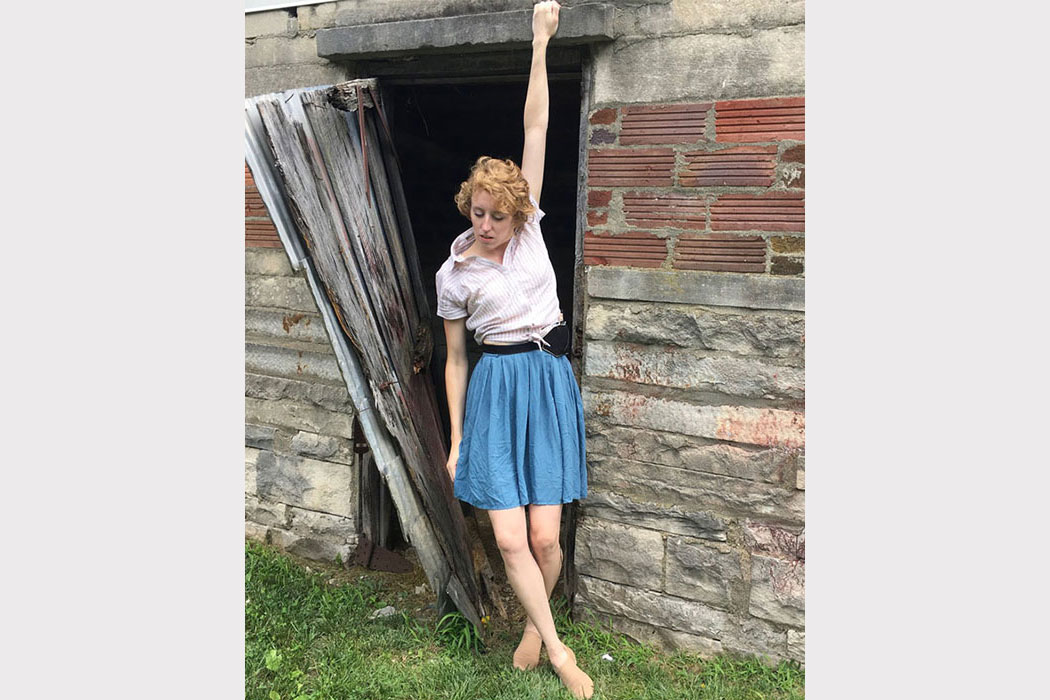
How challenging was making this film for the dancers?
Shea: They’re all professional dancers. The youngest one, Stephanie, in the orange dress, had just finished our program, but she has the face of an angel. So, I knew that she would just photograph well, and indeed she did. I love that close-up of her and Jarett. But, Rachel, I have always worked with. She’s one of our alums too, but she’s just a special talent. And Justin I had also known … But, yeah, they’re all professional dancers.
I’ve taught dance in a lot of places … and these are my best students. Really, they are salt of the earth.
Can you talk a little about working for IU, and the students here, and how your work impacts the world beyond IU?
Shea: I’ve taught dance in a lot of places, professional companies, universities, all over the country, and these are my best students. Really, they are salt of the earth. I mean, these are all Indiana kids who come from very modest means, and the work ethic, I mean there’s a bit of tabula rasa that happens. They’re open to learning almost anything. There’s this kind of no-nonsense, let’s get down to work. Then there’s talent, of course, but in the end, a lot of it’s about the work. So, I have to say that the students here have shown remarkable maturity and have been very successful, so I couldn’t be more pleased with the students that I’ve come across … and the professional dancers that I’ve met here as well.
Hahn: I would echo that. Having taught in other places, the thing I appreciate about the students here is their humility. Other places I’ve taught, there’s a sense of entitlement. There’s a sense that education is a commodity and that the purpose of education is to set oneself up for a career. So, there’s a careerist bent these days that I find distasteful and counterproductive. And, I really haven’t felt that at all among graduate or undergraduate students here. Everyone’s ready to work, diligent, and willing to stretch themselves in a way that’s critical.
Shea: Then, of course, the Media School did a fine job with Andrew and Ryan. I really love that this is an Indiana University team. The university afforded us the money to do this through the New Frontiers program. So, the university has done its job in supporting not just research scientists but also artists to be able to make their work. And of course, working with film is amazing. I mean, we’re used to more dealing with live performance predominantly, where it’s expensive to get up and take something into the outside world. That’s more grant writing. But, film is a remarkable vehicle, and in the age of phones and laptops, and all the watching, it’s really changing the face of dance. I don’t know if theater is being affected in quite the same way, but I guess there’s always been a film part of the theater discipline that we haven’t really had in dance. We’re just sort of starting to get there.
Breath | Light | Stone appeared in the Original section of the Spring 2019 issue of the IU Alumni Magazine, a magazine for members of the IU Alumni Association. View current and past issues of the IUAM.
Original shines a spotlight on the works, talents, and interests of IU alumni across the globe. Have something unique worth sharing? Let us know at iueditor@iu.edu.
Tags from the story
Written By
Bill Elliott
Bill Elliott, MA’84, PhD’99, is a content specialist at the IU Alumni Association and an associate editor of the IU Alumni Magazine. He enjoys sharing amazing stories about IU alums from all around the world.
